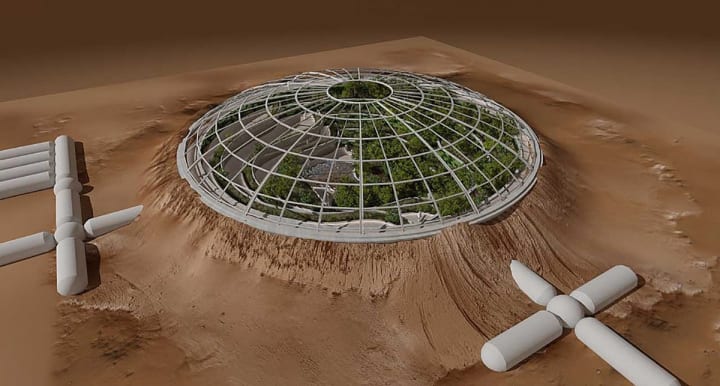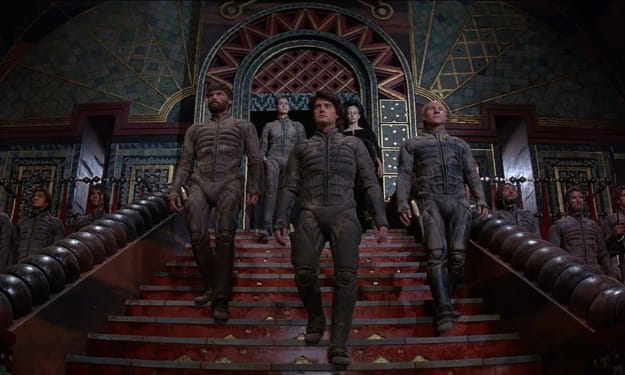Crops in Space
Growing crops in space could be the solution to any world hunger, but how feasible is it?

"The world hunger problem is getting worse rather than better," said a Presidential Commission report on World Hunger from 1980. "A major crisis of global food supply—of even more serious dimensions than the present energy crisis—appears likely... unless steps are taken now... Moral obligation alone would justify giving highest priority to the task of overcoming hunger."
When this report was released, the percentage of world hunger was at a high of around 30 percent. Since then, the percentage has decreased significantly, to an all time low of 12 percent in 2016. In May of 2015, the UN released a report stating that they are on the right track to eradicate world hunger within a single generation.
Back in 1980, this assessment was neither new nor uncorroborated. For years, agricultural scientists had been warning us of some ominous trends. Terrestrial solutions of the world food problem were elusive until genetically modified organisms (GMOs) came along. The debate regarding use of fertilizers creating environmental damage, including possible ozone depletion in the atmosphere, is still ongoing. Drought and severe climatic conditions continue to cause fluctuations in food production. The increasing genetic uniformity of crops also creates problems. By developing fewer strains of food plants, we make them more vulnerable to disease. This could cause widespread shortages and famine.
Biotechnology has given crops the ability to fight off diseases and insects, allowing the crops to be grown using less crop-protecting chemicals. This biotech is saving the environment by decreasing greenhouse gas emissions and soil erosion. These crops do not need nearly as much tilling which saves valuable, and reusable, topsoil—allowing more crop to be produced with less fuel.
The UN Department of Economic and Social Affairs has statistically calculated that the world population will continue to grow exponentially. All this is doing a big part in helping feed a constantly growing population, but the fact is that there is only a limited amount of farming land that remains on our planet.

Image via Daily Mail
Space Grown Agriculture
What are our chances of growing food in space? In the 80s, the Soviet Union was well on its way to proving that space agriculture is feasible. The Russians had apparently isolated people for up to six months in closed environments, where they successfully grew wheat and made bread. They've done experiments in space, too, preparing for long-term, agriculturally self-supporting, orbiting settlements.
A number of scientists in the United States have investigated the feasibility of carrying on intensive agriculture in space to supply food for the inhabitants of space settlements. Grains, bread, poultry, and pigs could be raised in closed agricultural areas adjacent to orbiting colonies, where light, temperature, and moisture can be varied according to the requirements of a particular crop.
Space inhabitants could develop the full complement of crops and livestock instead of resorting to the dullness of dehydrated foods and Tang, about which the astronauts have complained. Droughts, pests, and pervasive disease—even the passage of seasons—could be eliminated. Fertilizer could be produced in space by using solar heat to combine nitrogen and oxygen from the asteroids.The supply of materials available for agricultural facilities would grow exponentially as colonies were completed, so it would be possible to construct huge areas for growing food in space. Although the workability of closed agricultural ecologies has not yet been conclusively verified, it appears likely that, sooner or later, food will be grown successfully in space.

Image via Pinterest
Satellite Powered Produce
Engineering studies have suggested that our most cost-effective means of supplying electricity could be to build satellite solar-power stations and send their output to Earth via microwave links. The stations would be built in space of materials retrieved from the shallow gravity wells of the moon and asteroids. One study showed that a lunar mining and launching facility and a space chemical-processing plant could be built for between $5 million and $10 million. The first satellite power station would be completed only two years later.
Even if satellite power does not turn out to be the primary incentive for developing the resources of space, studies from the 80s claimed that lunar materials could be economically used to support projects planned by NASA for the 1980s and 1990s. While this was not taken advantage of at the time, the studies showed that lunar oxygen could be used as rocket fuel and for life-support systems in space, lunar silicon could be fabricated into solar collectors for satellites, and lunar metals could form the supports and hulls of large space structures.

Image via Pinterest
Possible Plans
Engineering studies have examined the possibility of retrieving Earth-approaching asteroids for space manufacturing. This resource is vast. There are probably more than 100,000 such objects with diameters greater than 100 meters and masses around 1 million metric tons. The unit cost to retrieve asteroids may be many times less than the $1,000 per kilogram lift cost of earthly materials using the shuttle or $1 to $2 for lunar materials. The small asteroids have nearly zero-gravity fields, so the prospect of costly landings is avoided. Solar energy for processing and propulsion is continuously available on the asteroid.
The favorable economics of asteroid retrieval, combined with the apparent attractiveness of space agronomy, raise the possibility that food could be grown more cheaply and more reliably in space than on Earth, given a highly developed program of space manufacturing. Large quantities of dehydrated crops could be dropped out of orbit (possibly by an electromagnetic mass-driver device), enter the Earth's atmosphere aboard a metal-foam reentry body, land in the ocean near potential consumers, and be towed ashore for use. Astronomers Michael Gaffey and Thomas McCord have explored similar techniques for recovering asteroidal metals on Earth.
A 3 kilometer carbonaceous asteroid towed earthward by a solar-powered mass driver (most of the mass-driver mass and expense would go into the power plant and its radiators) may provide enough growing area to support 7 billion people that populate our world. In the interim, smaller asteroids could be turned into smaller growing areas as famine insurance.
In the 80s, it was estimated that a retrieval system would cost in the range of $100 billion to $200 billion, spread over the following 20 to 30 years, putting us right here in present day. This investment compares favorably with the $700 billion it would cost between now and the year 2000 to provide irrigation and to modernize agriculture in the Third World. Given With a potential market of $200 billion to $500 billion a year, the payoff would be rapid.
Given reasonable productivity in self-supporting space colonies and low-cost transport to Earth, the cost of food production on Earth may be rivaled by the economical breadbaskets of space. The moon might not be made of cheese, but it looks like this is the closest we might get to it—next step is dairy farms…
About the Creator
Futurism Staff
A team of space cadets making the most out of their time trapped on Earth. Help.






Comments
There are no comments for this story
Be the first to respond and start the conversation.